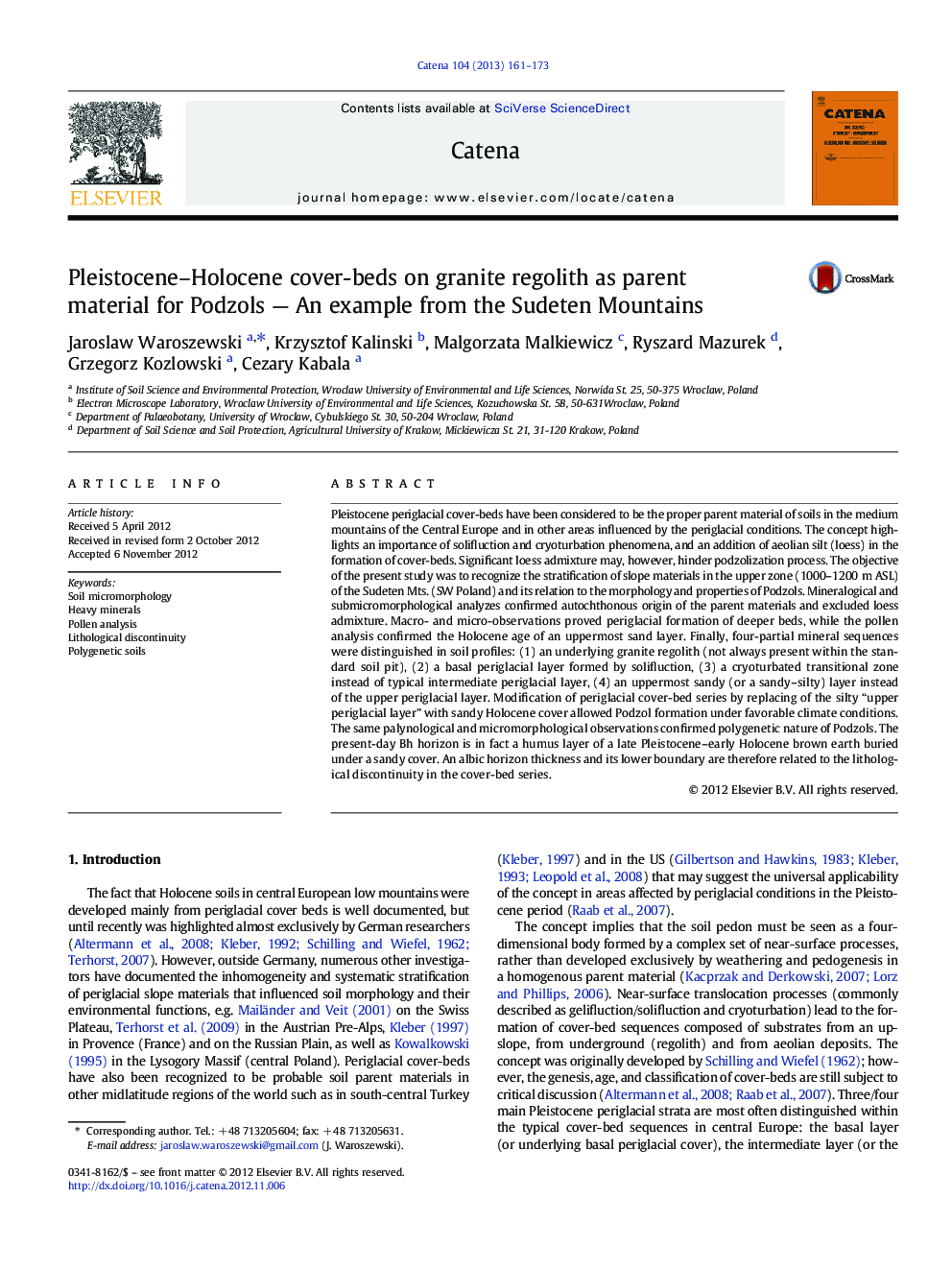| کد مقاله | کد نشریه | سال انتشار | مقاله انگلیسی | نسخه تمام متن |
|---|---|---|---|---|
| 4571684 | 1629248 | 2013 | 13 صفحه PDF | دانلود رایگان |

Pleistocene periglacial cover-beds have been considered to be the proper parent material of soils in the medium mountains of the Central Europe and in other areas influenced by the periglacial conditions. The concept highlights an importance of solifluction and cryoturbation phenomena, and an addition of aeolian silt (loess) in the formation of cover-beds. Significant loess admixture may, however, hinder podzolization process. The objective of the present study was to recognize the stratification of slope materials in the upper zone (1000–1200 m ASL) of the Sudeten Mts. (SW Poland) and its relation to the morphology and properties of Podzols. Mineralogical and submicromorphological analyzes confirmed autochthonous origin of the parent materials and excluded loess admixture. Macro- and micro-observations proved periglacial formation of deeper beds, while the pollen analysis confirmed the Holocene age of an uppermost sand layer. Finally, four-partial mineral sequences were distinguished in soil profiles: (1) an underlying granite regolith (not always present within the standard soil pit), (2) a basal periglacial layer formed by solifluction, (3) a cryoturbated transitional zone instead of typical intermediate periglacial layer, (4) an uppermost sandy (or a sandy–silty) layer instead of the upper periglacial layer. Modification of periglacial cover-bed series by replacing of the silty “upper periglacial layer” with sandy Holocene cover allowed Podzol formation under favorable climate conditions. The same palynological and micromorphological observations confirmed polygenetic nature of Podzols. The present-day Bh horizon is in fact a humus layer of a late Pleistocene–early Holocene brown earth buried under a sandy cover. An albic horizon thickness and its lower boundary are therefore related to the lithological discontinuity in the cover-bed series.
► Polygenetic Podzols in the Sudetens developed in three partial slope cover-beds.
► Basal and transitional periglacial beds developed well while upper cover is absent.
► Surface sandy cover, hosting an eluvial horizon, formed in the Holocene.
► All covers consist of autochthonous material without loess addition.
► Illuvial horizons of Podzol overlap buried upper horizons of an older brown earth.
Journal: CATENA - Volume 104, May 2013, Pages 161–173